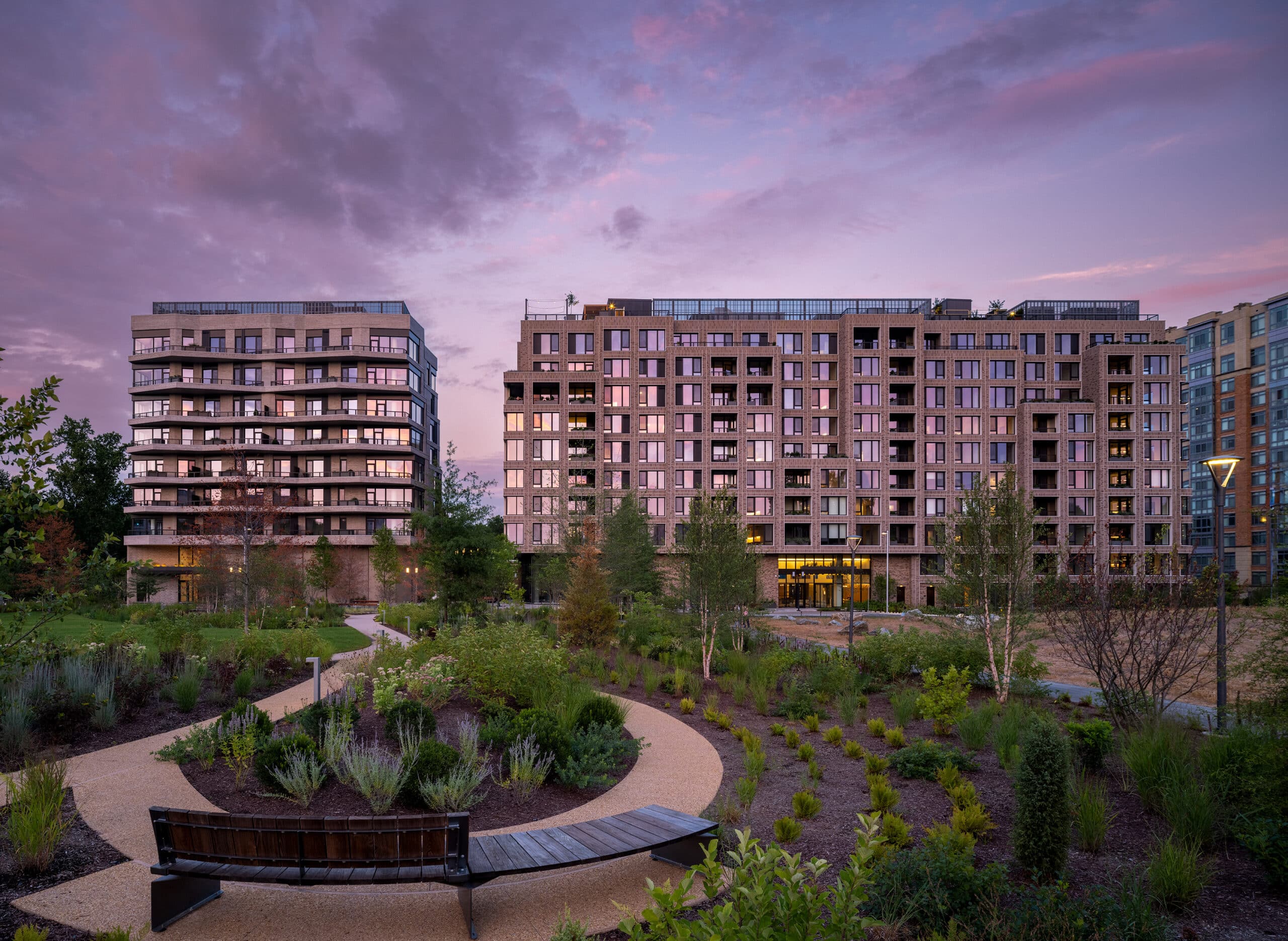
By Elia Griffin | August 29, 2024 | MoCo 360
To Montgomery County Executive Marc Elrich, the future of development and economic vitality in the county lies with the life sciences and technology industries.
But to get a stronghold in those industries, the county must have an economic and development landscape more like Northern Virginia, Elrich said Tuesday evening at an event sponsored by the business platform Bisnow in Bethesda.
The event dubbed the “Future of Montgomery County,” examined the county’s 2024 development trends and brought together architects, county planners, contractors, engineers, developers and business executives.
Elrich said in his opening remarks that after hearing from many developers that “life is better in Northern Virginia,” he decided to investigate the claim himself and spoke with planners and regulatory agencies about how the county differed from that region.
One of the key differences is how Virginia taxes development and commercial property using special taxing districts and laws that allow taxes in those districts to fund transportation projects, such as the Silver Line Metro, he said.
Speaking to the development and business community, Elrich suggested it is time to rethink how the county taxes commercial properties.
“I’m asking people here to be part of a change in Montgomery County to help us move the [County] Council, to help us move the state legislature, to give us authority that the state legislature in Virginia gave to the Northern Virginia counties,” Elrich said, referring to the process it will take to allow the county to change its taxing method.
According to Elrich, Fairfax County taxes commercial property at a rate nearly 50% higher than Montgomery County does. In the county, commercial and residential tax rates are the same.
Elrich also believes the county’s impact taxes, typically paid in large sums at the start of a project, are hindering development.
Development impact taxes are “assessed on new residential and commercial buildings and additions to commercial buildings in the county to fund, in part, the improvements necessary to increase the transportation or public-school systems capacity,” according to the county Department of Permitting Services website.
Elrich referred to Northern Virginia’s commercial taxing method as the “front door” to raise funds from special taxing districts to go toward transportation projects in the county such as the Bus Rapid Transit line.
Changing the taxing method is especially necessary now, Elrich said, because Gov. Wes Moore (D) recently warned counties of upcoming budget difficulties, especially regarding transportation funding, while speaking recently at the Maryland Association of Counties conference in Ocean City in August.
“The No. 1 impediment we have is transportation. And we’ve known about this for a long time,” Elrich said. “People in the early part of the 21st century were talking about transportation being the key to economic development. And Montgomery County has not been able to make the progress that it needs to be.”
Improvements to the county’s transportation system, Elrich argues, will create a strong foundation for the county’s goal of becoming a life sciences hub and destination for developers.
Andy Altman, a principal and co-founder of Washington, D.C.-based Fivesquare Development, said during a panel at Tuesday’s BisNow event that transit-oriented, high-density development is important to developers looking to develop in the county.
“Montgomery County has fantastic assets and these Metro stops … many of them are waiting for the development of that same kind of alignment,” Altman said, referring to Fivesquare’s partnership with the Washington Metro Area Transit Authority (WMATA) on a joint development project at the Grosvenor-Strathmore Metro station.
Sandy Paik, general counsel at Rockville-based The Tower Cos., also spoke on the panel and acknowledged that development environments in Montgomery and Fairfax counties are different.
“[Montgomery County has] been left behind in some areas,” Paik later told MoCo360, “I do think that investing deeply in the transit-oriented development is going to be really critical for [the county].”
During his speech, Elrich noted several projects underway in the county that he hopes will become future life sciences hubs such as the property where the former White Flint Mall was located near the North Bethesda Metro station.
In July, WMATA officials, state and local officials and Maryland Sen. Ben Cardin discussed the future of the White Flint land with plans to construct a research center.
Elrich said he drew inspiration from Boston’s Kendall Square development, a neighborhood and district in the city known for being the home to a cluster of technology and life sciences companies such as Google, Johnson & Johnson, Novo Nordisk and Pfizer.
Other areas Elrich envisions as life sciences hubs are in downtown Silver Spring with the future expansion of United Therapeutics and in Gaithersburg with the expansion of AstraZeneca. Elrich also said the Viva White Oak development in Silver Spring is another area of interest as it is expected to be the future site of the East County campus of Montgomery College.
Elrich said he has been reaching out internationally to raise awareness about the county’s interest in being the next big bio-hub and in the last year has traveled to Taiwan twice and to Vietnam, China, India and South Korea.
On these trips, Elrich said he found that many biotech international companies are interested in the area due to its proximity to the National Institutes of Health in Bethesda and the U.S. Food and Drug Administration which are headquartered in Silver Spring.
“We’re examining all of our life sciences assets. We’re determining what does Montgomery not have that other jurisdictions have?” Elrich said at the event. “We’re ranked No. 3 [in the country] in life sciences … Our goal is to change that, make a mark. And what we’re focused on is making sure that we have everything in Montgomery County that San Francisco and Boston have.”